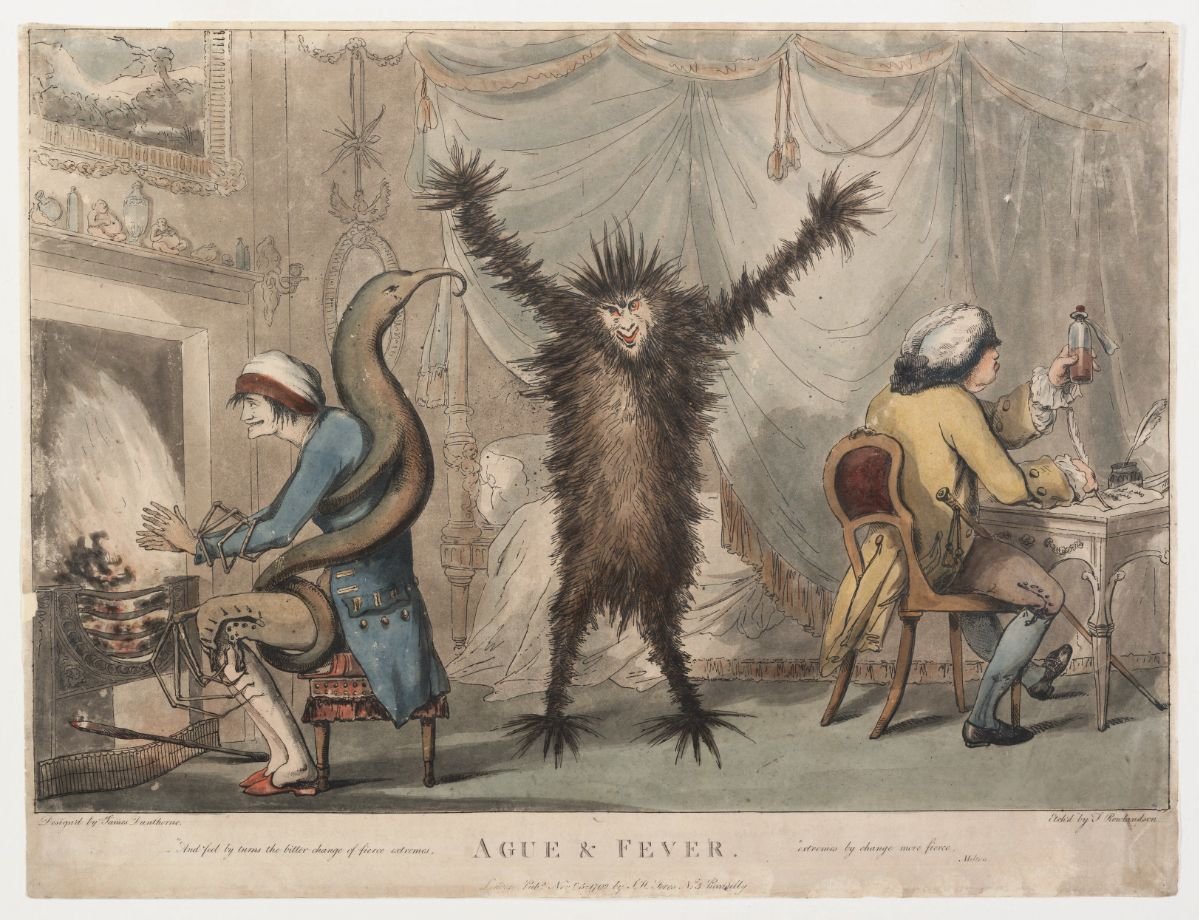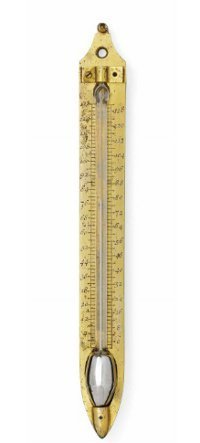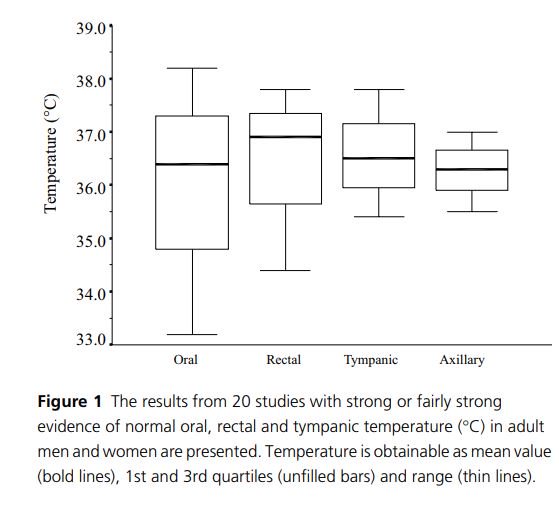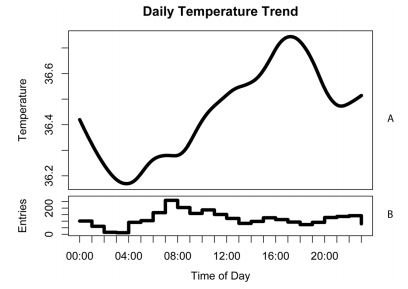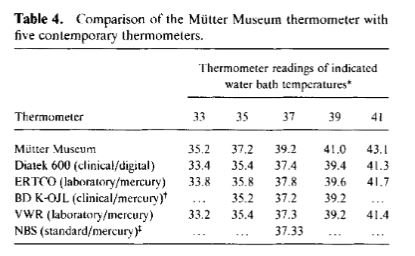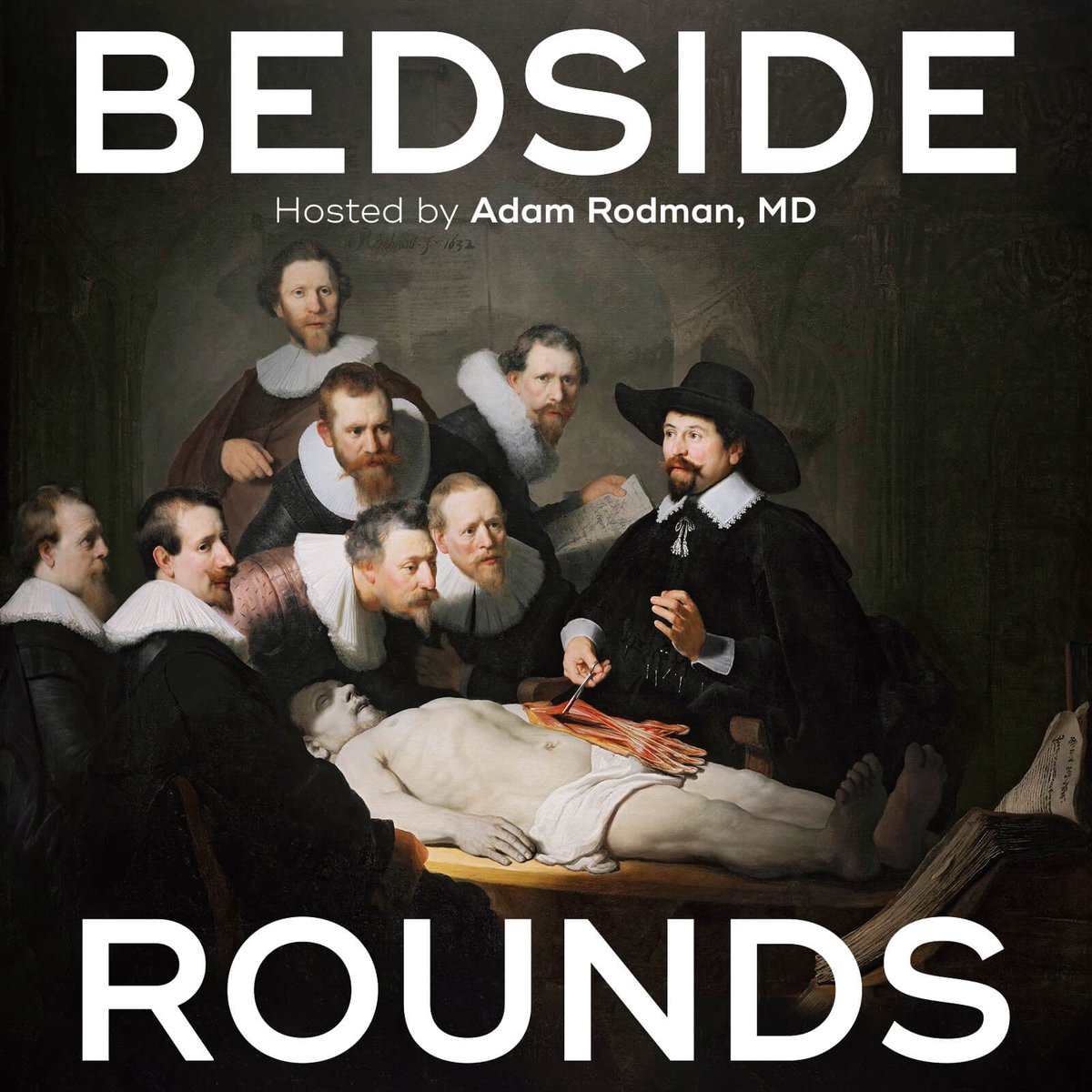It’s time for another #histmed Tweetorial -- this time I'm going to talk about the pesky definition of a fever, and where the 98.6 F average body temp came from!
Full disclosure: will use C AND F for temp, but no K or R.
Full disclosure: will use C AND F for temp, but no K or R.
FYI this is a complementary Tweetorial to @tony_breu's amazing one on why we have night sweats https://twitter.com/tony_breu/status/1127262873577766912
Let’s start with a case!
A 29 year-old woman presents with a week of cough, myalgias, and chills. Her temperature is 99.9 F (37.7C). She tells you, “This is a fever for me because I run low.”
A 29 year-old woman presents with a week of cough, myalgias, and chills. Her temperature is 99.9 F (37.7C). She tells you, “This is a fever for me because I run low.”
Last week I had a poll on what actually constitutes a fever. Over a thousand of you voted (and ignore the seizure where I wrote 383.3C …) -- and the conclusion seemed to be that a fever is 100.4 F (38C). https://twitter.com/AdamRodmanMD/status/1123273484497510401
So I have a simple question -- does our patient have a fever?
And question # 2 -- what is the normal human body temperature?
To answer this question, we’re going to have to start in ancient Greece, take a long stop in the 19C, and end up talking about iPhone apps -- basically my idea of a good time! So let’s go!
Fever is one of the most ancient ideas in medicine, dating back well before the Hippocratics.
Celsus described “calor” as one of the four signs of inflammation, along with dolor, tumor, and rubor -- which are remarkably still taught today!
Celsus described “calor” as one of the four signs of inflammation, along with dolor, tumor, and rubor -- which are remarkably still taught today!
But for most of history, fever was considered a disease in and of itself, often called “ague” in English.
By the 19th century, doctors started to realize that fever was a sign of illness rather than its own disease.
By the 19th century, doctors started to realize that fever was a sign of illness rather than its own disease.
It also helped that accurate thermometers were invented. In 1741 Fahrenheit developed the mercury thermometer, which you can buy for a steal at 90,000 USD ( https://www.dailymail.co.uk/news/article-2215558/Thermometer-300-years-ago-Mr-Fahrenheit-sells-whopping-67-000-auction.html)
In the 19th century, these increasingly accurate tools were being used in the care of patients. Two French doctors showed that the average human axillary body temperature was 98.6. Sound familiar?
Then Carl Wunderlich emerged on the scene. In 1851, Wunderlich started to track the axillary temperatures of every patient admitted on his wards throughout the day. He published his results in 1868 (English translation here: https://archive.org/details/dasverhaltendere00wund/page/n6)
He collected data on 25,000 patients -- millions of data points, and analyzed them all, finding average temperatures, but also fever curves for individual diseases. This is an example of his data for TB.
And his conclusion for normal body temperature (and fever)?
"The range of normal temperature in the axilla is from 97.25 to 99.5 and that the mean normal temperature is 98.6."
A fever started at 100.4F. He also found that temperatures were higher in the PM than the AM.
"The range of normal temperature in the axilla is from 97.25 to 99.5 and that the mean normal temperature is 98.6."
A fever started at 100.4F. He also found that temperatures were higher in the PM than the AM.
This has been accepted as fact for over 130 years. But is it true? Wunderlich, after all, took axillary temperatures, and wrote in his book that a difference of a half degree Fahrenheit affected things very little.
In the early 20th century, a number of small studies were published that challenged Wunderlich’s numbers -- the best of them (on medical students) suggested an AM temperature of ~ 97.8 and PM temp of 98.1 (source: https://jamanetwork.com/journals/jama/article-abstract/308675)
This study by Sund-Levander and colleagues performed a systematic review of these old studies and found heterogeneous results, and largely poor quality evidence (source: https://www.ncbi.nlm.nih.gov/pubmed/12000664 )
On to modern statistical methods! In 1992, Mackowiak et al published an analysis of baseline oral temperatures from a Shigella vaccine trial. They found that the average temperature was 98.2, with a fever being 99.9. There was almost a one degree F variation throughout the day.
In 2017, Obermeyer and colleagues examined a huge dataset from hospital outpatients who would be expected to have a temperature within normal limits (35,488 patients -- larger than Wunderlich’s set!)
They found that the mean temperature was 36.6. And perhaps most provocatively, the most important predictor of mortality was variation from baseline body temperature. A 0.3 F increase (1 SD) was linked to an 8.4% increase in one-year mortality!
Hausmann and colleagues here at @BIDMC_IM crowdsourced temperatures from 329 participants from an iPhone app and found an average temperature of 36.5 C (97.7F), with a fever at 37.5 C (99.5 F) source: https://link.springer.com/article/10.1007%2Fs11606-018-4610-8
Finally, Mackowiak tracked down Wunderlich’s original thermometer to the amazing @MutterMuseum in Philly, and compared its readings to modern laboratory thermometers -- and as you can see, it measured considerably higher!
So let’s ask those questions again. What is a normal human body temperature?
And what is a fever?
And finally, our 29 year-old woman with myalgias and cough who “runs low” with a temp of 99.9 -- does she have a fever?
So what are our learning points here?
 A fever is lower than you think
A fever is lower than you think
 Temperature varies diurnally throughout the day
Temperature varies diurnally throughout the day
 Most important is probably variation from baseline
Most important is probably variation from baseline
 A fever is lower than you think
A fever is lower than you think Temperature varies diurnally throughout the day
Temperature varies diurnally throughout the day Most important is probably variation from baseline
Most important is probably variation from baseline
Or as @sargsyanz put it very nicely: https://twitter.com/sargsyanz/status/1123333799344001024
If you like this kind of stuff, I host a medical history podcast with the ACP called Bedside Rounds! ( http://www.bedside-rounds.org ) / ( https://itunes.apple.com/us/podcast/bedside-rounds/id919579524?mt=2)
You can also get CME/MOC credit from @ACPinternists just for listening if you're a member! http://www.acponline.org/BedsideRounds
And now a serious question for you -- is this Tweetorial going to change your clinical practice? (and comment why!)
And a final thought to leave you with -- why are we still taught that 98.6 is normal and 100.4 is a fever? And what else have we been "taught" when the reality is far more complex, and with important implications for our patients?

 Read on Twitter
Read on Twitter



